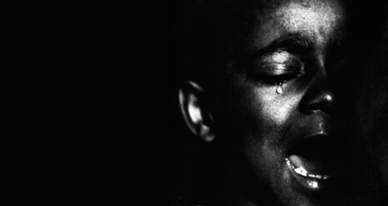production notes
the sea islands | twa terminal | marian anderson |
the hammerstein ballroom | gordon parks
Born in Fort Scott, Kansas in 1912, Gordon Parks became one of the most significant photographers of the 20th Century. His first significant photographs
were on behalf of the Farm Services Administration (FSA), a government agency designed to call attention to the plight of the needy during the Depression
and to create an historical record of social and cultural conditions across the country. One of the first photos Parks was inspired to make during the period
is now considered his signature image - American Gothic - a photograph of an African American cleaning woman, Ella Watson, holding a mop and a
broomstick before an American flag.
In 1944, Parks began working at Vogue magazine. In 1948 he became the first black photographer at Life magazine. When Life printed Parks's
passionate close-up of a crying girl's face (pictured above) on the cover of a 1967 issue about poverty in the U.S., he again connected readers to the real-life
emotions of one family. For this assignment he photographed the Fontennelle family at home in a Harlem tenement, evoking their personal struggles and the
children's perseverance.
Gordon Parks contributed a number of significant pieces of photography to Mitchellville, including a devastating close-up of a crying girl (pictured above),
a photograph of a young black girl drinking water from a "colored only" water cooler, and a series of photographs he took for the FSA.
Works of Gordon Parks' were selected because they graphically displayed the horrible effects of slavery and then Jim Crow racism in the United States.
The purpose of having Michael Thompson give these works to Gabriel's wife, Tessa, was to show how the history of the oppressed, their suffering and pain,
is appropriated by the dominant culture. Thus it is significant that Michael stamps his initials "MT" (empty) on the back of these photographs and it is
those very initials that Gabriel discovers before confronting his own past.
Gordon Parks FSA photographs were also used in the warehouse scenes as images from Mitchellville.
Gordon Parks connection to the film was not limited to his photographs. His daughter, Leslie Parks, a lifelong friend of the director, offered her house
in Bed-Stuy as the location for Ken Malik's home.


